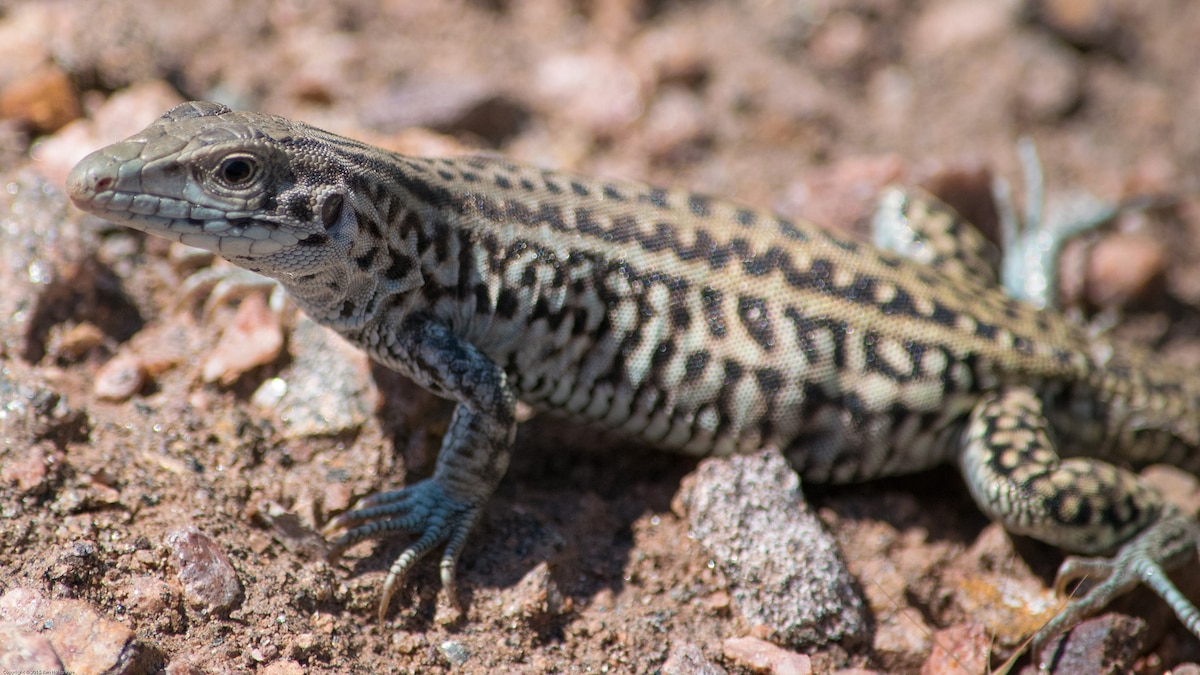We’re not the only animals that suffer anxiety. From lizards to song sparrows, challenging situations can have long-lasting impacts on species.
Published April 25, 2023
6 min read
Many of us react to stressful situations by drinking too much coffee, sleeping too much or not enough, or overeating (to meet this story’s deadline, for instance, I had yogurt, four cookies, and a ton of grapes).
As it turns out, several wild animals also experience physical reactions to stress. The main challenges faced by wild animals are whether they’ll find enough food or whether they become someone else’s food. But sometimes, it’s people that cause the trauma.
For instance, a new study shows the rare Colorado checkered whiptail lizard stress-eats in response to noise. Part of their habitat includes the Fort Carson Army Base, where low-flying aircraft regularly produce sounds louder than what they’d experience naturally. (Read how extreme heat can stress wildlife.)
After observing some of the wild reptiles and taking their blood, the scientists found that during flyovers, the lizards released more of the stress hormone cortisol, as well as moved less and ate more. Eating more likely compensated for the energy lost while experiencing stress, the authors say.
Here are some other ways animals react to challenging situations.
Sleep troubles
Sleep, for all mammals, is key—and not having enough can be harmful.
“Sleep deprivation, a form of stress, can elicit increased eating in humans and some non-human animals alike,” says Barrett Klein, an entomologist at the University of Wisconsin-LaCrosse who also studies sleep biology.
In lab studies, fruit flies subjected to social isolation slept less and ate more, and sleep-deprived mice ate more during their recovery. Some butterflies that don’t get enough rest forage poorly and lay their eggs on the wrong types of plants.
If some bee species don’t get enough sleep, they’ll perform their waggle dances, the bee equivalent of GPS, “with a less precise direction component,” Klein says via email, giving their spectators less helpful information on where to find food.
Passing on trauma
Scott Heppell, a fish ecologist at Oregon State University, stops short of saying other animals react to stress like we do.
“That’s a bit too anthropomorphic for me,” Heppell says via email. “But I might say that other animals have somewhat analogous responses,” for example, when stressful events experienced by parents “can affect performance of their offspring.” In humans, that concept is called generational trauma.
Small freshwater fish called sticklebacks appear to pass trauma down to their babies, though the impacts are different among males and females.
In research published in the Journal of Animal Ecology, scientists showed that sons of stickleback fathers who had been exposed to predators were risk takers, but the trauma had no effect on daughters. Mothers exposed to predators had anxious offspring of both sexes—but why remains unknown.
Predator danger
The mere presence of predators can make animals anxious. Take the song sparrow, a study subject of Liana Zanette, a population ecologist at Western University in Ontario, Canada.
In a 2022 study, Zanette studied wild song sparrows on British Columbia’s Gulf Islands National Park Reserve, where they have few predators. During the study, she put up barriers to ensure that nothing would happen to the birds.
For 18 weeks Zanette’s team intermittently played recordings half of the study birds of friendly animals like Canada geese. No harm, just fowl.
The other half of the birds heard recordings of crows and ravens, which eat sparrow eggs and nestlings.
The results showed that a fear of phantom predators caused these birds to produce 53 percent fewer offspring than the birds that didn’t hear the scary soundtrack.
“The parents are really skittish when they think there are predators around,” Zanette says, so instead of spending their time incubating their eggs or feeding chicks, they flush from the nest. (Read how oil and gas drilling is causing birds to have fewer chicks.)
That all might sound like a bad thing, but evolutionarily the birds’ response is just right. Surviving and producing fewer offspring beats dying and producing none, Zanette says.
Such predator-induced fear can also cause lasting changes similar to post-traumatic stress disorder, she says. In a 2019 study, Zanette found that black-capped chickadees exposed to predators had elevated brain activity and a heightened sensitivity to danger for at least seven days afterward.
An ancient dance
In Canada’s Yukon Territory, snowshoe hares don’t need simulations—they have very real predators to worry about. The animals are the main prey of Canada lynx, and the dance between them has been evolving for millions of years, says Rudy Boonstra, professor emeritus at the University of Toronto, who has been studying both species for four decades.
Both species go through a 10-year cycle during which each species’ population fluctuates. When the hare population is high, lynx have a lot to eat and their population goes up as well.
But as the hare population declines the hares are not just being killed by lynx, they’re being stressed by being pursued, even if they escape. These hares produce fewer offspring and their offspring produce fewer offspring, until there are so few hares the lynx begin to starve and their population plummets as well. (Can snowshoe hares evolve to cope with climate change?)
Boonstra and colleagues showed that when lynx numbers were high and hares were in decline, levels of cortisol in snowshoe hare blood spiked. This stress takes a toll on female hares’ physical condition, which leads to weaker offspring.
This decade-long prey-predator cycle is a truly wild phenomenon, Boonstra notes, with no human creating the stress.
That’s partly why, like Heppell, Boonstra also doesn’t think human and wild animal stress responses can be compared.
“Their environment has been the same or similar for many, many generations, and ours changes all the time, every day.”

